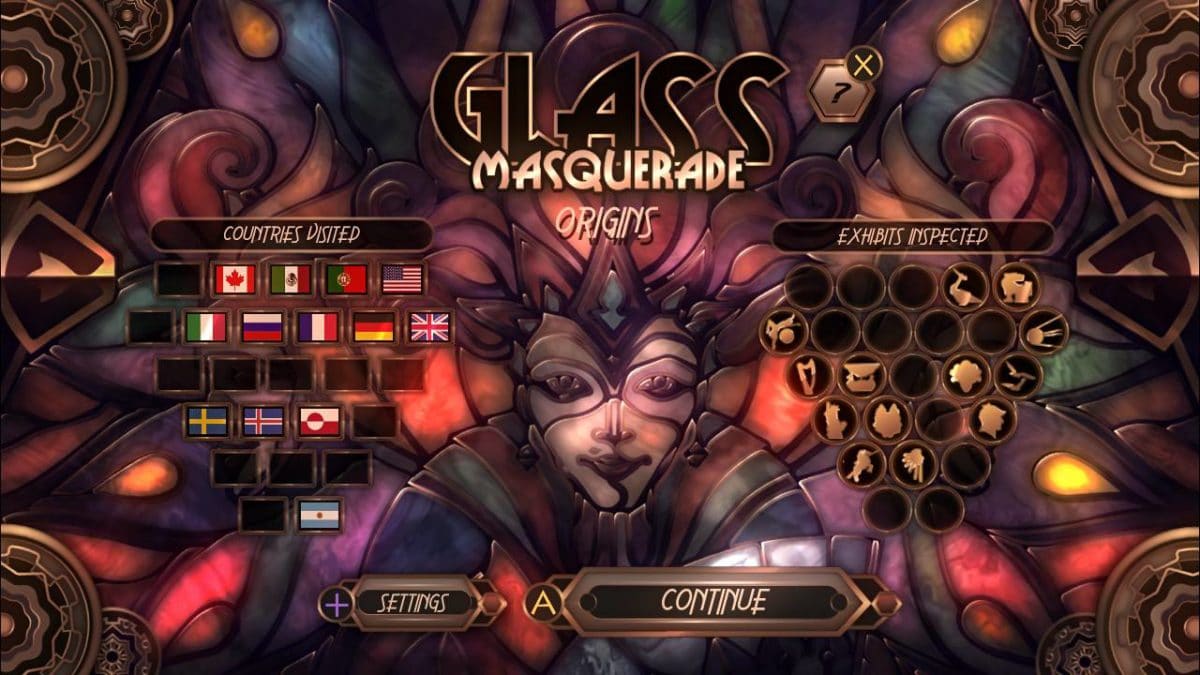Welcome to Glass Masquerade – an artistic puzzle game inspired by Art Deco and stained-glass artisans of the 20th century. Combine hidden glass pieces to unveil clocks and themes exhibited by various cultures of the world at the ‘International Times Exhibition’ – an interactive electronic show. A game that’s simple to understand, but hard to master – and it’s not even a rogue-dungeon crawler!

Glass Masquerade is one of those games you never thought you needed in your life. Everyone has probably broken something in their life. Let it be a glass, a vase or a window. We all tried puzzling it back together somehow (thanks superglue), but it never looked as good as before. Anyone who has been to a church in general (mostly the Catholic churches) has seen the glass stained windows that tell the story of Jesus Christ and the saints. Or other biblical passages for that matter. They already look ‘broken’, in a way. But this is the way the stained glass is ‘puzzled’ together and it makes for one heck of a puzzle game.
Glass Deco:
The art style of the game is based on Art Deco. This is an art style which first appeared in France just before World War I. It was influenced by designs of buildings, furniture, jewelry, fashion etc. to even some household objects. It took its name from the Exposition internatinonaledes art décoratifs et industriels moderns (compare it with the World Exhibition but for art). Glass Masquerade revolves around this concept, although it does not give any backstory on the exposition itself. It does feature however 25 of the competing countries, all with their own theme. Knowing what the different attending countries are known for really helps in solving the puzzles since you’ll have a general idea what to look for.

Before the Art Deco period, there was Art Noveau (‘New Art’), which was also an exceptional period for fine glass and other decorative objects, designed to fit their architectural surroundings. One of the most famous designers was René Lalique, who invented new ways to create glass sculptures. He also used colored glass to create decorative glass panels, featured on the famous ocean liners like the SS Ile de France (later used as a troop transport ship in World War II) and the SS Normandie. At the 1925 Exposition of Decorative Arts, he had his own pavilion, designed a dining room with a table settling and matching glass ceiling for the Sèvres Pavilion, and designed a glass fountain for the courtyard of the Cours des Métier, a slender glass column which spouted water from the sides and was illuminated at night.
Gameplay:
The fact that I needed to explain the above paragraph already shows why I loved the game, but also had my doubts about it. Glass Masquerade does what it does best. It gives the player thrilling glass puzzles to solve (jigsaw style) with a nice soundtrack that really compliments the game. But it does not give any details about how Art Deco was important for the revival of stained glass. Or why the game is centered around the Exposition internatinonaledes art décoratifs et industriels moderns. Such a shame, since it could give the game that extra layer I personally was looking for. But nevertheless, Glass Masquerade is really easy to control with the control sticks and a button, so no learning curve. The game does not punish you for being ‘late’ at solving a puzzle, so take your time. You can always retake a puzzle and try to beat your previous record.
Conclusion:
So if you are in the market for a nice, newly inspired puzzle game about art. Then really try your hand at Glass Masquerade (there already is a part two in the works). Well, I’m back to beating my records on my favorite puzzles – can you guess which? (Hint, I snuck them into this review).




